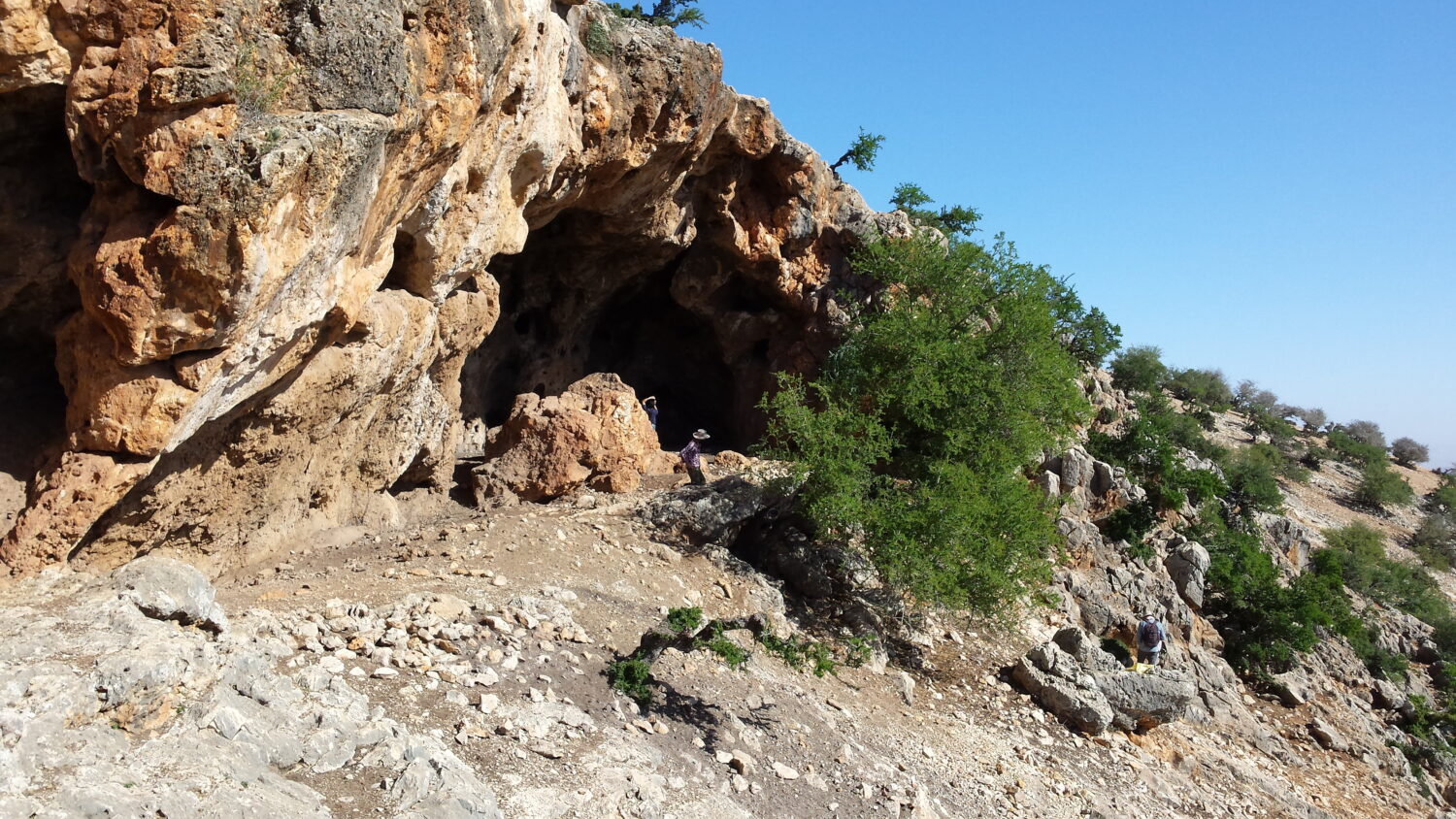Grantee Spotlight

Amy E. Clark, Assistant Professor, Harvard University
Amy Clark is an archaeologist whose field research is focused on the Middle Stone Age in Morocco. She received a Leakey Foundation grant in 2020, for archaeological excavations at Jorf el Hamam in southwest Morocco.
Growing up, I was always interested in archaeology as a way to combine my interest in history with my love for the outdoors. It wasn’t until I began taking classes in anthropology and human evolution as an undergraduate that my intellectual curiosity was really sparked.
In those classes, I learned that our minds are structured by the languages and customs of our societies and that we only became settled in cities and towns relatively recently. Prior to that, we moved across the landscape, often seasonally, in response to resources. And I learned that we were once not the only human species on the planet. Neanderthals coexisted with us, but they died off about thirty thousand years ago. More recently, genetic research has made this story even more intriguing by showing us that Neanderthal DNA lives on in some modern humans and Neanderthals were not the only human sub-species to have co-existed with Homo sapiens during the Pleistocene.
Much of my research has been focused on Neanderthals as a foil for our species’ own success. What did we do so differently back in the Pleistocene that allowed us to not only outcompete Neanderthals but to eventually spread across the globe and live in cities with tens of thousands of people?

In my Leakey-funded project in Morocco, I turn my attention to the evolution of our own species. Our species, Homo sapiens, owes its success to cumulative culture. We are who we are because of knowledge passed down from generation to generation. Knowledge about what plants will nourish us, which stone will break in predictable ways and provide the sharpest edges, and where to camp when the weather becomes cold. But also: how to make concrete, how to connect to the internet, how to dress to get a job as a corporate banker, and how to greet someone in a variety of social settings. I am interested, therefore, in how we developed the abilities to accumulate this wealth of know-how, but also how we became so social in the first place.
About one hundred thousand years ago, humans living in northwest Africa, in what is now Morocco, were making skillfully crafted stone points and attaching them to the ends of wooden spears, collecting small sea shells, drilling holes in them or modifying existing holes, wearing them as beads, and eating a mixture of terrestrial and aquatic resources. We don’t know too much about them, however, because research has accelerated in this region only recently.
Fossils show us that this population of humans had some archaic features but are members of our subspecies. This region was periodically cut off from the rest of the continent due to the formidable Sahara Desert; during other periods the desert was more humid and could have been traversed, or even inhabited. Therefore, I’m interested in the connectivity of social groups both within northwest Africa and within this region and other regions of Africa. The use of decorative beads tells archaeologists that human populations were large enough that members of the largest scale of an allied group couldn’t know each other personally so they would use other tools to signal group membership, such as specific ways of decorating the body or saying hello. Beads are one of the only elements of this complex system that is still preserved (think of the myriad ways we signal our many group memberships today).

Last summer, I used Leakey funding to excavate a rockshelter known as Jorf el Haman located in southern Morocco, about twelve kilometers from the current Atlantic coast. This site was found during a survey by my co-director, Abdeljalil Bouzouggar (Institut national des sciences de l’archéologie et du patrimoine, Rabat), and in 2019, we excavated a few test pits and found stone tools characteristic of those made by humans in the late Pleistocene (representing two stone tool industries: the Aterian and the Iberomaurusian) in stratified deposits. Most of what we know about this time period comes from northern Morocco. I plan to compare the cultural know-how exhibited at Jorf el Hamam (stone tool production, resource exploitation, perhaps bead use) with that of northern Morocco and other parts of Africa to understand something about the connectivity of human populations and the spread of cultural knowledge. Our excavations were very productive;: we expanded the 2019 test pits and gained a much clearer understanding of the stratigraphic sequence, as well as a much larger artifact collection that we are using to answer my questions regarding human connectivity. We also discovered cemented hearths which have the potential to yield information regarding home life during this period. Our work at this site is only beginning; we are still in the midst of analyzing the material and we plan to expand excavations next summer. However, we can already see intriguing similarities and differences between the nearby site of Bizmoune Cave, as well as sites in northern Morocco, so stay tuned as our work progresses!


